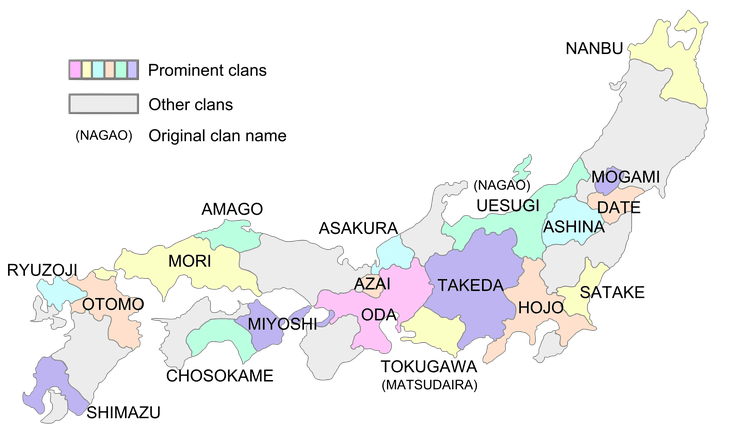44,887 total views, 6 views today
The Sengoku was a century-long period of political upheaval and warlordism in Japan, lasting from the Onin War of 1467–77 through the reunification of the country around 1598. It was a lawless era of civil war, in which the feudal lords of Japan fought one another in endless plays for land and power. Although the political entities that were fighting were actually just domains, the Sengoku is sometimes referred to as Japan’s “Warring States” Period.
The Onin War
The Onin War that initiated the Sengoku was fought over a disputed succession in the Ashikaga Shogunate; in the end, nobody won. For the next century and a half, local daimyo or warlords vied for control over the different regions of Japan.
Unification
Japan’s “Three Unifiers” brought the Sengoku Era to an end. First, Oda Nobunaga (1534–1582) conquered many other warlords, beginning the process of unification through military brilliance and sheer ruthlessness. His general Toyotomi Hideyoshi (1536–598) continued the pacification after Nobunaga was killed, using a somewhat more diplomatic but equally pitiless set of tactics. Finally, yet another Oda general named Tokugawa Ieyasu (1542–1616) defeated all opposition in 1601 and established the stable Tokugawa Shogunate, which ruled until the Meiji Restoration in 1868.
Although the Sengoku Period ended with the rise of the Tokugawa, it continues to color the imaginations and the popular culture of Japan to this day. Characters and themes from the Sengoku are evident in manga and anime, keeping this era alive in the memories of modern-day Japanese people.
Thoughtco.com
History App That Make Learning History Exciting
Sengoku The Unforgettable

Learn more about this game : link


